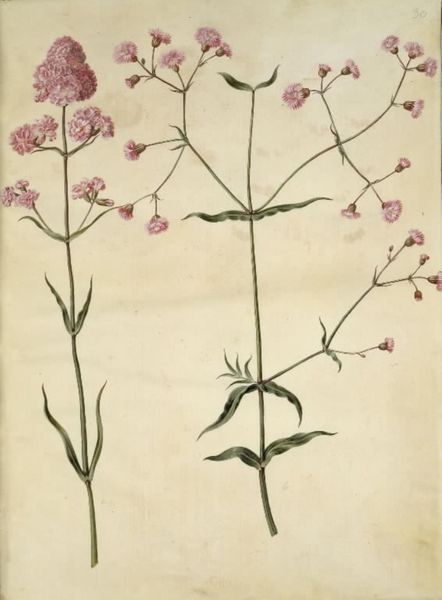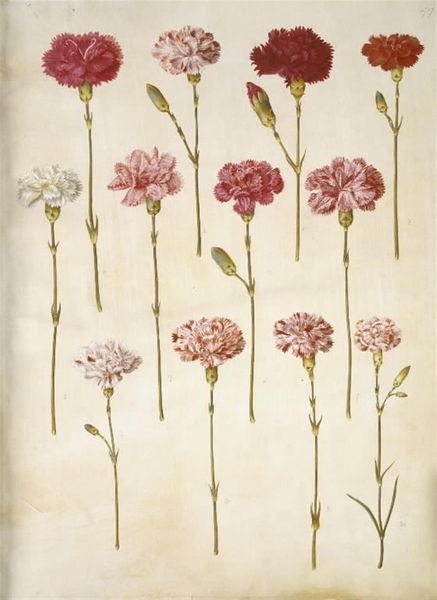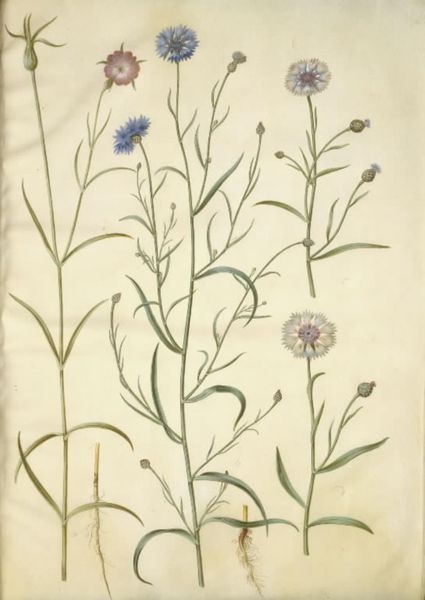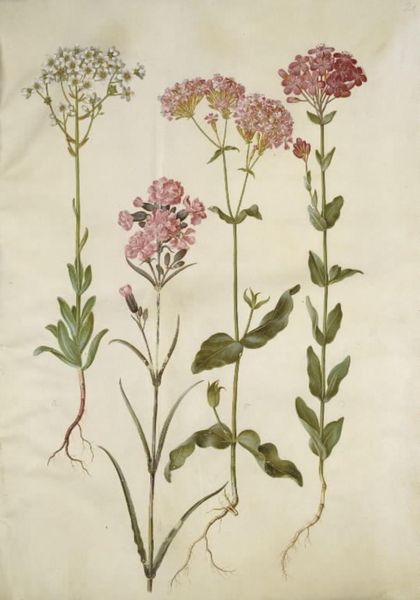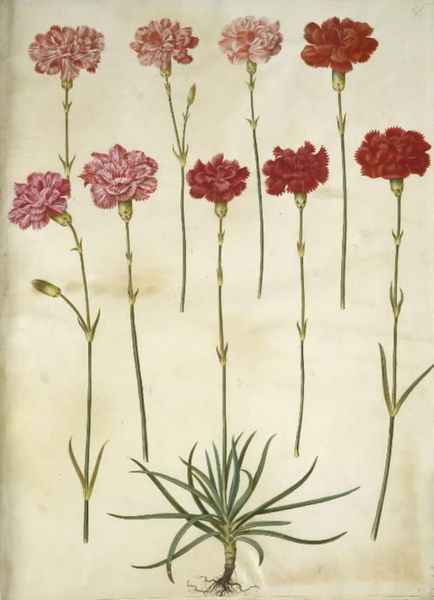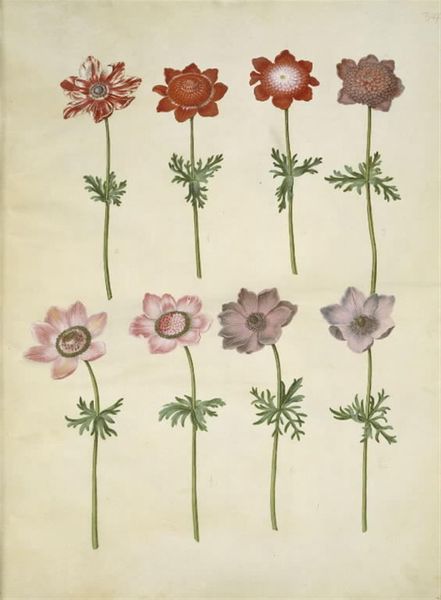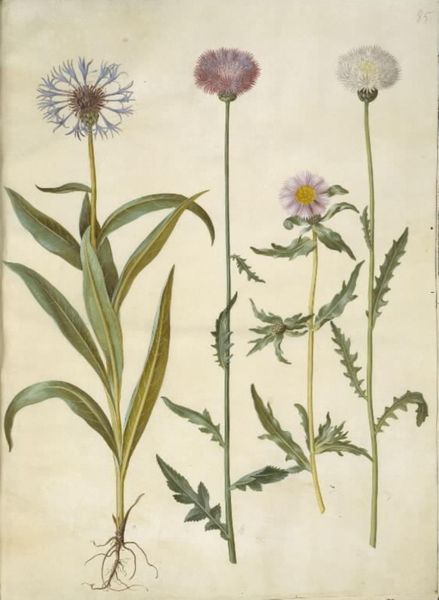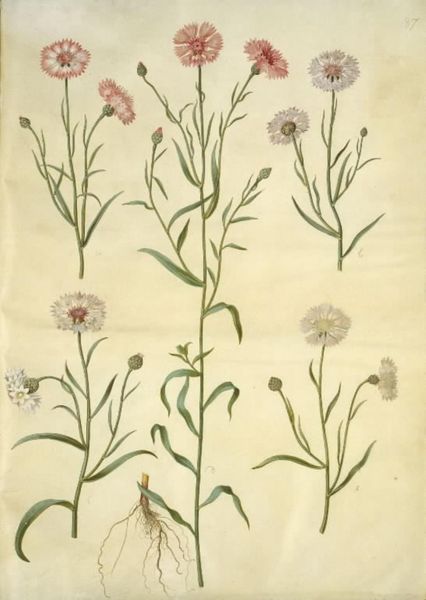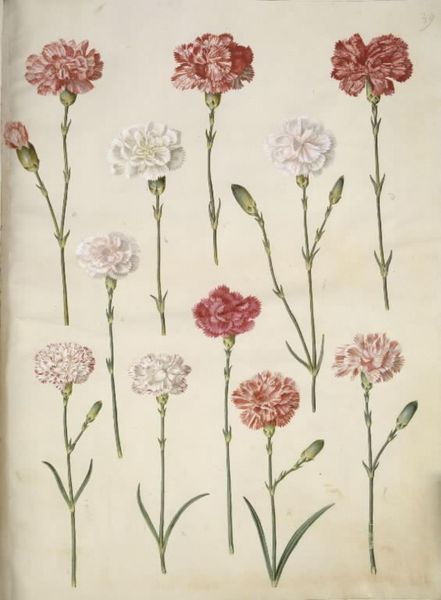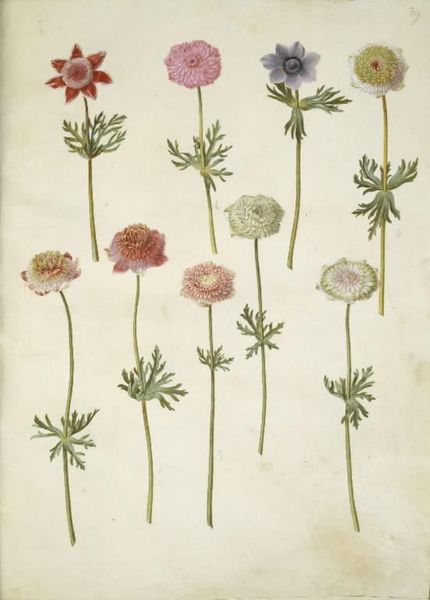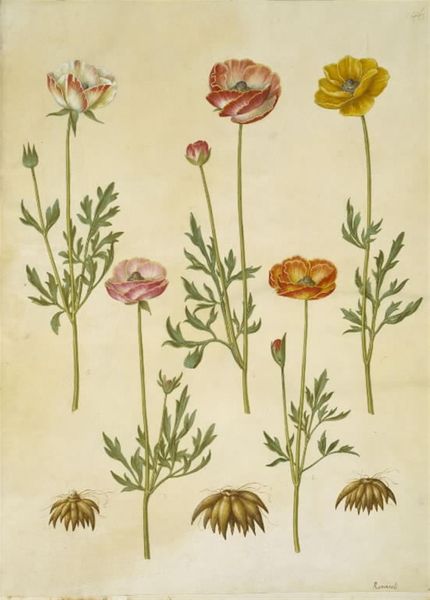
drawing, painting, gouache, watercolor
#
drawing
#
water colours
#
baroque
#
painting
#
gouache
#
watercolor
#
watercolour illustration
#
watercolor
Dimensions: 505 mm (height) x 385 mm (width) (bladmaal)
Editor: So this is "Dianthus plumarius" by Hans Simon Holtzbecker, made sometime between 1649 and 1659 using watercolor and gouache. It's surprisingly delicate and subtle, but something about its precise rendering feels almost…scientific? What catches your eye in this image? Curator: The seemingly objective rendering actually belies a deeper cultural context. Botanical art in this period wasn’t just about scientific documentation. Think about the role gardens played for the wealthy elite. Owning exotic or rare flowers was a symbol of status and power. Editor: Oh, I see! So, this watercolor isn't just a pretty picture, it’s also communicating social status? Curator: Exactly. Furthermore, consider where this piece would likely be viewed: within a collection, perhaps bound in a volume. The very act of collecting and classifying natural specimens reflected an ambition to control and understand the world, a key aspect of the emerging scientific worldview championed by the powerful. How does that influence your reading of its ‘delicate’ nature? Editor: It makes it seem like this delicacy isn’t just aesthetic, but almost… strategic? A carefully cultivated image for a specific audience, meant to impress and maybe even intimidate. Curator: Precisely. And Holtzbecker's choice to isolate the plants against a neutral background emphasizes their individual value and allows for close study, almost as if they were specimens pinned in an entomological collection. Does this not change the sense of the natural? Editor: Absolutely. I'm now seeing the flowers less as flowers and more as artifacts or symbols, consciously deployed in the service of social display. Thank you! Curator: It also makes one think of the complicated intersections between science, art and power. Thank you.
Comments
No comments
Be the first to comment and join the conversation on the ultimate creative platform.
